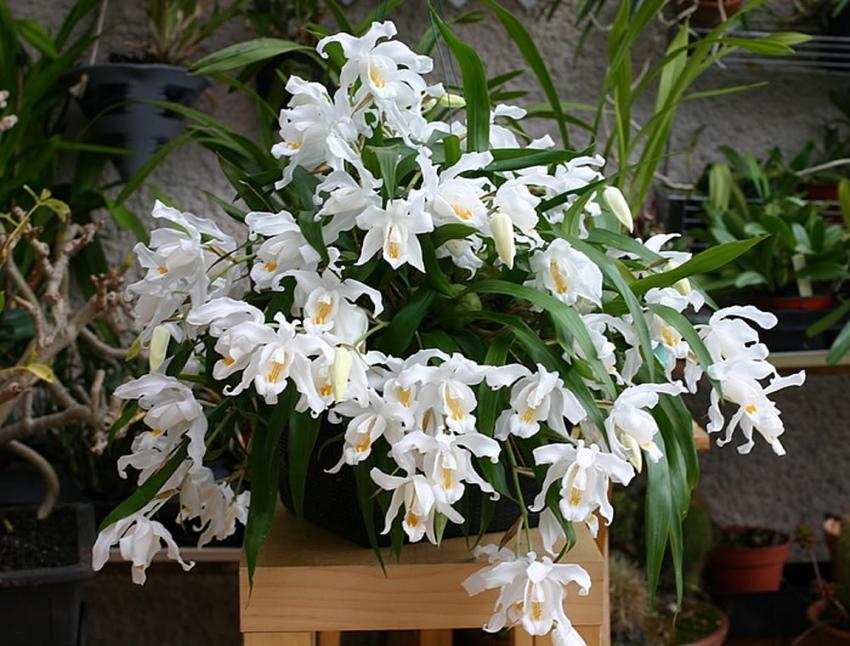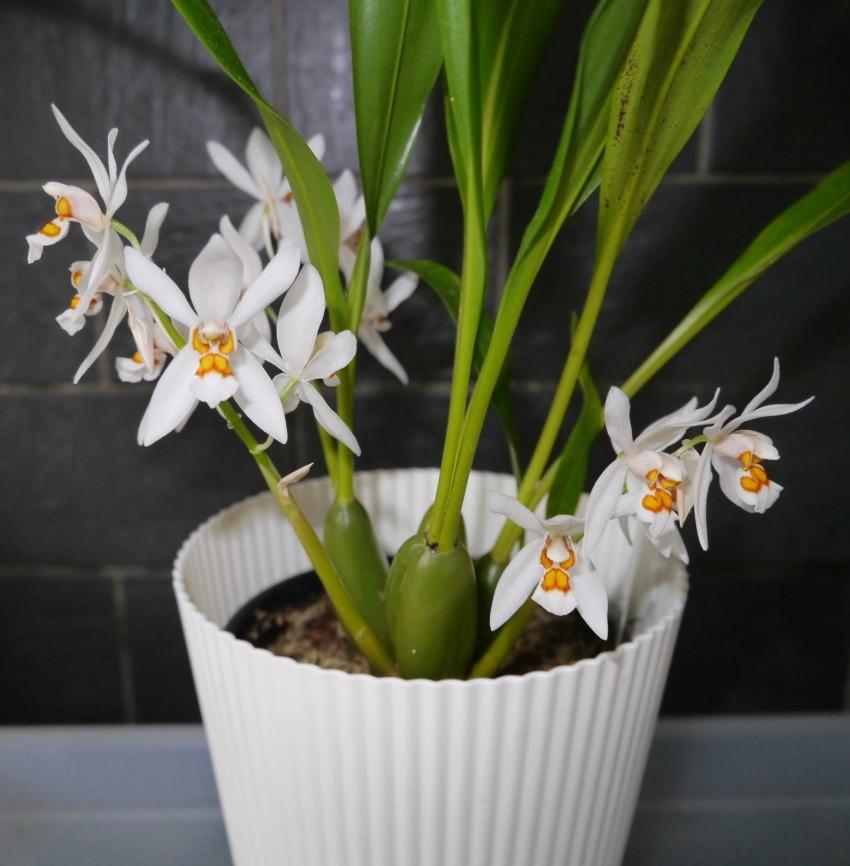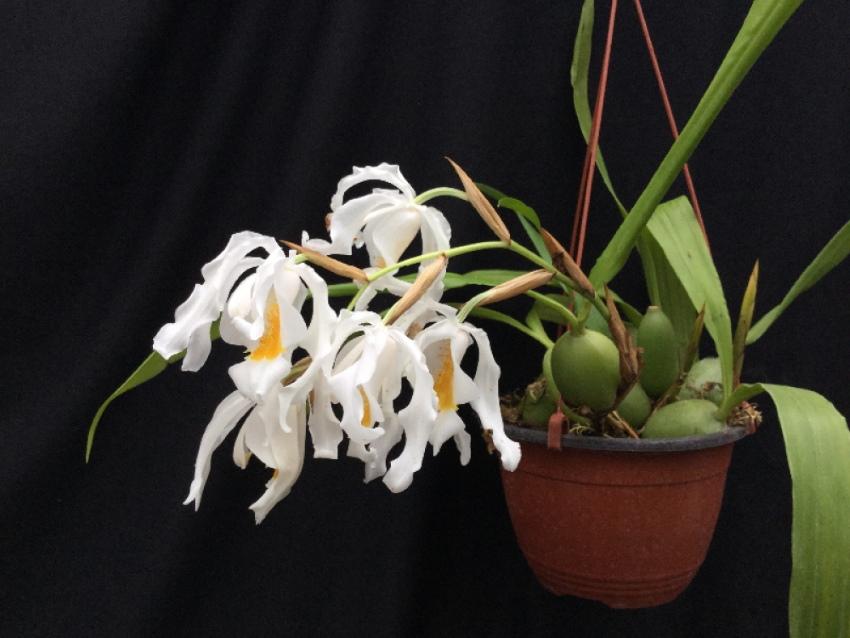Cellogin's orchid - the queen of ampel indoor plants
 One of the most chic, but at the same time graceful epiphytes that look beautiful in hanging pots is the cellogine orchid. Its long stalks are strewn with fragrant flowers and gracefully hang from the pot. Each lives up to 8 weeks, with the opening of the buds mainly in the winter. Agree that there is no more beautiful sight than a flowering plant against the background of snowdrifts outside the window. How does this orchid differ from other species of the family?
One of the most chic, but at the same time graceful epiphytes that look beautiful in hanging pots is the cellogine orchid. Its long stalks are strewn with fragrant flowers and gracefully hang from the pot. Each lives up to 8 weeks, with the opening of the buds mainly in the winter. Agree that there is no more beautiful sight than a flowering plant against the background of snowdrifts outside the window. How does this orchid differ from other species of the family?
Characteristic features of cellogyne

Unlike phalaenopsis at cellogyne leaves are not hard, but more like belts.
By the summer, the cellogin is already overgrown with lush foliage and forms young pseudobulbs. The old ones gradually shrink and die off, since it is they who provide food to the shoots. At the same time, the orchid also grows rhizomes. In September, most species of cellogyne retire, preparing for the future December flowering. To do this, they should be provided with coolness (no more than 15 ° C) and a decrease in the frequency of watering. The second stage of rest occurs in March - April and lasts about 3 weeks. At the same time, there are varieties of cellogin that bloom in the summer, as well as thermophilic varieties that do not need rest.
The flowering itself is really gorgeous: the peduncle appears from the base of the pseudobulb and can be up to 60 cm long. Up to 20 medium-sized fragrant flowers, mostly white and creamy yellow, bloom on it. The diameter of each is no more than 10 cm, while the petals and the lip are narrow.
Cellogin's orchid - the subtleties of growing and care
 An epiphytic beauty needs high humidity and good, but diffused, lighting. Regarding the temperature of the content, it may be different depending on the specific variety:
An epiphytic beauty needs high humidity and good, but diffused, lighting. Regarding the temperature of the content, it may be different depending on the specific variety:
- Orchids with a thermophilic character thrive at 30 ° C. It is enough to reduce the night temperature by only 3 °. In these species, the soil must be moist all year round.
- Celogyns, who prefer a cooler content, need a maximum of 20 ° heat and a drop of about 5 °.
- Cold-loving orchids continue to develop at temperatures of 15 ° C. They will need a 10 ° drop at night.
Cellogines belonging to the last two groups should be watered regularly only during the growth period. For the winter, they go to rest in a cool room, respectively, watering is reduced and top dressing is canceled. Orchids that do not rest are fed all year round with special fertilizers, having reduced the dose by 2 times.